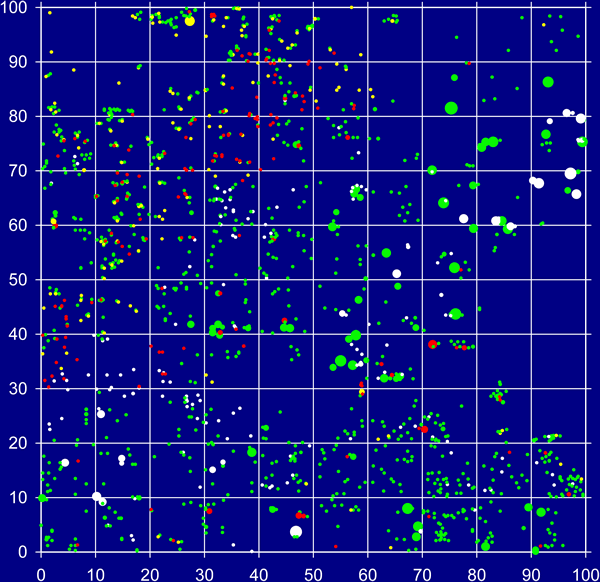|
Knowledge
of the timing and spatial structure of conifer invasion into meadows
is critical to understanding the natural dynamics of forest-meadow
mosaics and to establishing a baseline for assessing future change.
In
this section, we present studies of the spatial and temporal patterns
of conifer invasion at Bunchgrass Ridge and of the extent to which
these have been shaped by extrinsic factors (changes in climate
or disturbance regime) and intrinsic controls (interactions within
and between tree species).
A.
Spatial and temporal patterns
B. Extrinsic vs.
intrinsic controls
|
| Waves
of conifer invasion |
 |
• grand
fir - live
• lodgepole
pine - live |
• grand
fir - dead
•
lodgepole pine - dead |
| Symbol
size approximates age |
|
| Successive
waves of conifer invasion in a 1-ha plot. Lodgepole
pine (now dead) and grand fir were the first to
invade open meadow in the mid- to late-1800s. More
recent (20th-century) invasion of lodgepole
pine (some dead) and grand fir has filled large
areas of adjacent meadow. |
|
|
|
![]()
![]()
![]()
![]()

